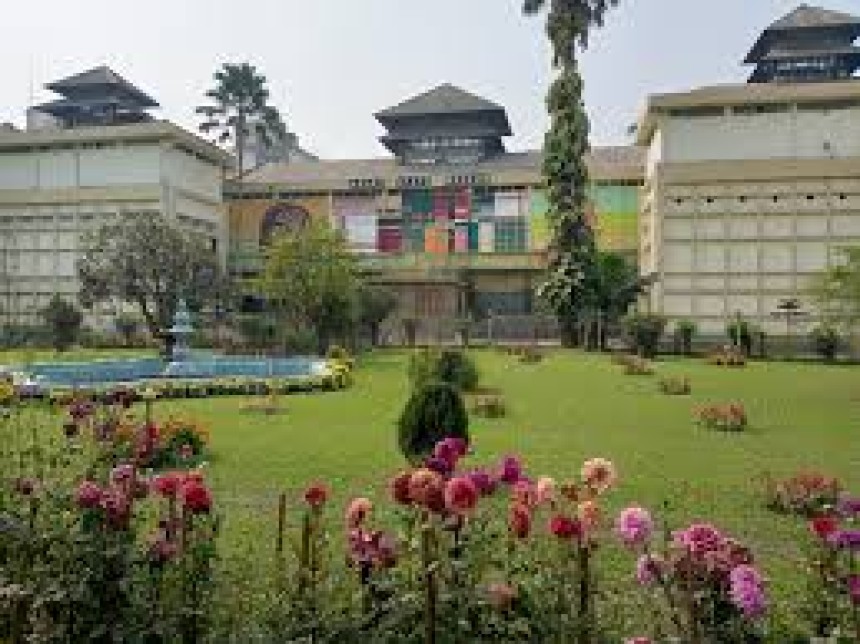
Assam State Museum: A Cultural Gateway to Assam's Rich Heritage
The Assam State Museum in Guwahati is more than a museum. It is the gateway to the rich cultural and historical tapestry of Assam and Northeast India.
The Assam State Museum, located in the vibrant city of Guwahati, is a treasure trove of Assam’s rich cultural, historical, and archaeological heritage. Serving as a significant cultural institution, the museum offers a fascinating journey into the diverse traditions, art forms, and history of Assam and Northeast India. If you’re a history enthusiast or someone interested in the cultural fabric of the region, a visit to the Assam State Museum Guwahati is a must.
This article will look into what makes the Assam State Museum Guwahati so unique, including its collections and history, in addition to its overall experience offered to visitors.
The Significance of Assam State Museum
Located in the heart of Guwahati, the Assam State Museum is more than just a repository of artifacts; it is an epitome of varied and multi-leveled culture of Assam and its people. It has played an important role in conserving the rich heritage of Assam, ranging from Assamese, tribal, and colonial influence.
The museum was founded in 1940 by the Government of Assam to preserve the history of the region, and ever since, it has become one of the most important museums in the northeastern part of India. The exhibits on various sections have made it really fascinating for everyone who is keen on knowing more about the history, art, and anthropology of Assam.
Location and Accessibility
The Assam State Museum is located conveniently in the Kacharipara locality of Guwahati. It is quite accessible from the different parts of the city. The public transports, taxis, and private vehicles can reach here.
The museum is located in a calm, green surroundings and thus, an ideal location for a serene and enriching cultural experience. It is strategically located in the heart of Guwahati and hence easily accessible to any tourist visiting the city.
What's Assam State Museum All About?
The Assam State Museum houses a vast collection of artifacts that depict the cultural growth of Assam and the adjacent regions. Right from ancient archaeological findings to handicrafts made during the prehistoric era, the museum has been divided into various sections which reflect different parts of Assam's heritage.
Here is a summary of some of the different sections and exhibitions that make it a must visit:
1. Archaeological Section:
The Archaeological Section of the Assam State Museum displays the most significant archaeological finds from the region. It houses sculptures, inscriptions, and relics of the ancient kingdoms and dynasties of Assam. Here, visitors can view artifacts belonging to the Ahom Dynasty, Kachari Dynasty, and other eras. Some of the prominent attractions include:
Sculptures from the Kachari Kingdom, which testify to the expertise in craftsmanship during the ancient Assam era.
Bronze statues and stone carvings, which depict the religious and cultural activities prevalent in early Assam.
Ancient inscriptions in Assamese, Sanskrit, and other languages prevalent in the region
2. Anthropological Section
The Anthropological Section of this museum is the most striking section, giving information regarding the more vivid Assamese cultural diversity. In this section, the traditions, rituals, and daily life of the various indigenous communities of Assam are depicted.
Traditional attire and ornaments of various tribes such as Bodos, Mishing, Karbi, Tiwa, and so on.
Tools, weapons, and other household utensils that are used in the tribal region for hunting and agriculture.
Items related to religion that are an epitome of the specific religious practices and faith of Assam's tribes.
This gallery brings visitors close to the life of Assam's natives so that the visitors can be well aware of their rituals, traditions, and beliefs.
3. Art and Craft Section
The Assam State Museum's Art and Craft Section is a feast for the eyes of all interested in Assamese art and craft. Here, the museum features all sorts of traditional and modern art of the region, such as:
Madhubani and Pattachitra paintings by Assamese artists that describe mythological and folk tales.
Handicrafts such as Muga silk, Bamboo crafts, and Terracotta works that represent the work of local artisans.
Wood carvings and stone carvings that reveal the intricate artistry of Assam’s craftsmen.
This section offers a vibrant display of the artistic heritage of Assam, making it a perfect stop for anyone interested in traditional handicrafts and visual arts.
4. Natural History Section
Assam, with its richness in biodiversity, is known for having the most unique flora and fauna found in India. The Natural History Section of the Assam State Museum houses various wildlife and ecosystems of the region. These exhibits include:
Taxidermy specimens of animals like elephants, tigers, rhinoceros, and several species of birds native to Assam.
Botanical exhibits which display the diversity of flora from the region including orchids, bamboo, and tea plants.
Geological specimens representing the geology and natural resources of Assam.
This section is perfect for nature enthusiasts and those who are interested in the natural history of the place.
5. Folk Art Section
Assam’s folklore and rich tradition of performing arts are celebrated in the Folk Art Section of the museum. The section includes exhibits on traditional Assamese dance forms, such as Bihu dance, Sattriya dance, and Bhortal dance, along with musical instruments used in Assamese performances. It also features puppets and other traditional art forms that are integral to Assam’s folk culture.
This section gives a better understanding of the artistic expressions that have been passed down through generations in Assam.
6. Historical Artifacts and Exhibits
The museum also houses several historical artifacts from the colonial period and the British era. These include:
Old maps, photographs, and documents from the British colonial period that shed light on the region's history under British rule.
Weapons, coins, and currencies from various ancient periods, a reflection of this region's political and economic life.
Visitor experience at Assam State Museum
A visit to the Assam State Museum will give you a rich experience by allowing you to delve into the heritage of the region. The museum is very well maintained with clear labels and descriptions in both English and Assamese. The peacefulness of the atmosphere in the museum, surrounded by greenery, provides a serene environment for exploration.
Apart from the permanent exhibitions, the museum also holds periodic temporary exhibitions. There are contemporary artists, photography collections, and thematic exhibitions on various cultural subjects. These add a dynamic flavor to the museum and make it an ever-changing art and history destination.
How to Reach Assam State Museum
By Air: Guwahati is well connected to major cities in India, and the Lokpriya Gopinath Bordoloi International Airport is just a short distance from the Assam State Museum. From the airport, you can take a taxi or a cab to the museum.
By Train: The main railway station in the city is Guwahati Junction, which connects all major cities in India. From the railway station, it is easy to reach the museum by taxi or auto-rickshaw.
By Road: It is well connected by road; you can go to the Assam State Museum by private vehicle, taxi, or bus.
Timings and Entry Fees
The Assam State Museum is open to visitors on all days except Mondays and national holidays. The general visiting hours are from 10:00 AM to 5:00 PM.
Entry Fee: Entry fee may be little high for foreign nationals. Nonetheless, it is quite feasible for any visitor.
Guided Tours: The museum also offers guided tours for those who wish to learn more in-depth about the exhibits. The guides are knowledgeable and provide insights into the history and significance of the artifacts.
Conclusion
The Assam State Museum in Guwahati is more than a museum. It is the gateway to the rich cultural and historical tapestry of Assam and Northeast India. From ancient artifacts and tribal customs to art, crafts, and wildlife, the museum offers an immersive journey through the region's diverse heritage.
For anyone visiting Guwahati or Assam, a visit to the Assam State Museum is a must. It gives a deeper understanding of the land's heritage, culture, and traditions. Whether you are a history lover, an art enthusiast, or simply someone seeking to connect with Assam's cultural roots, the Assam State Museum is sure to leave you with lasting memories.
Exploring the Uniqueness of Lab-Grown Diamonds
In terms of quality, lab-grown diamonds are identical to natural diamonds. They share the...


